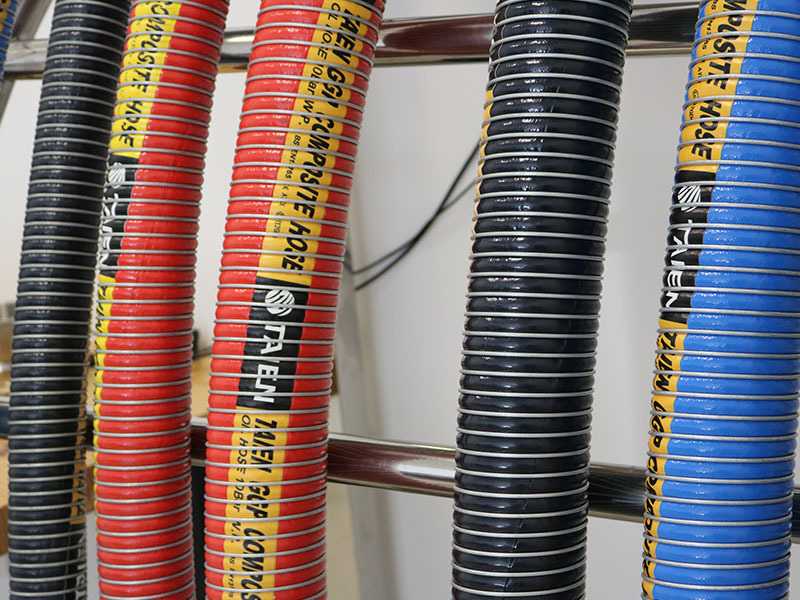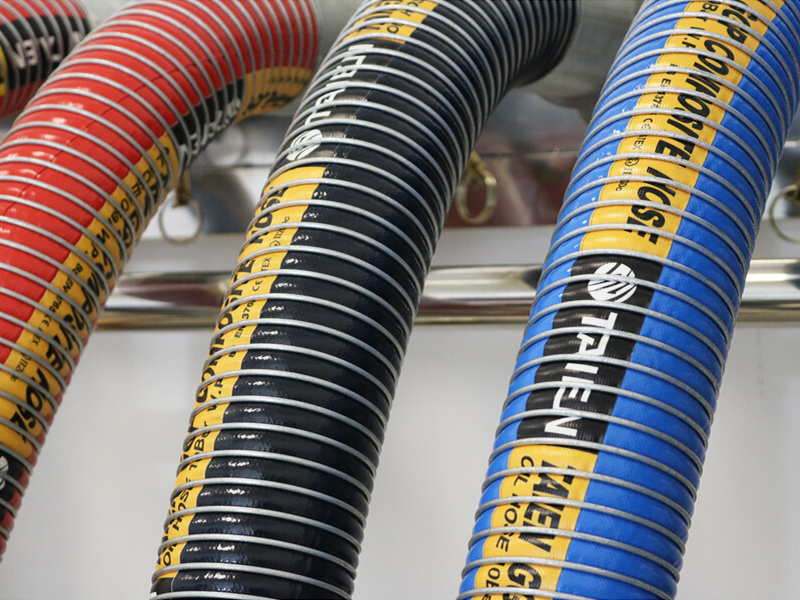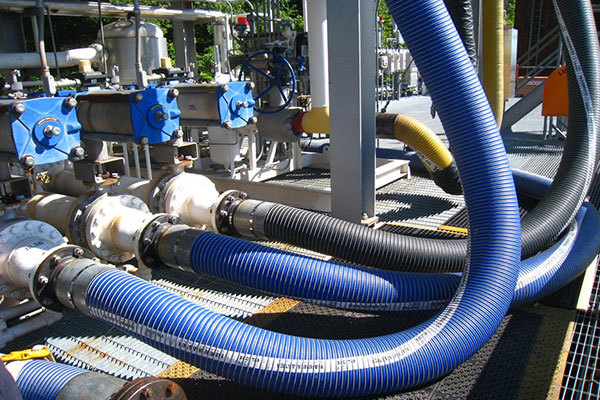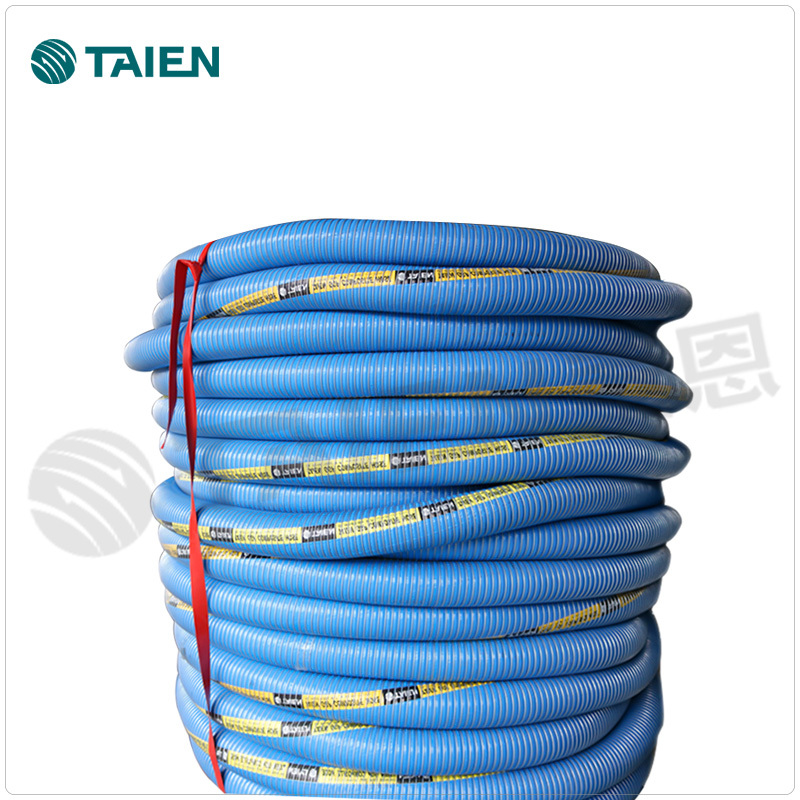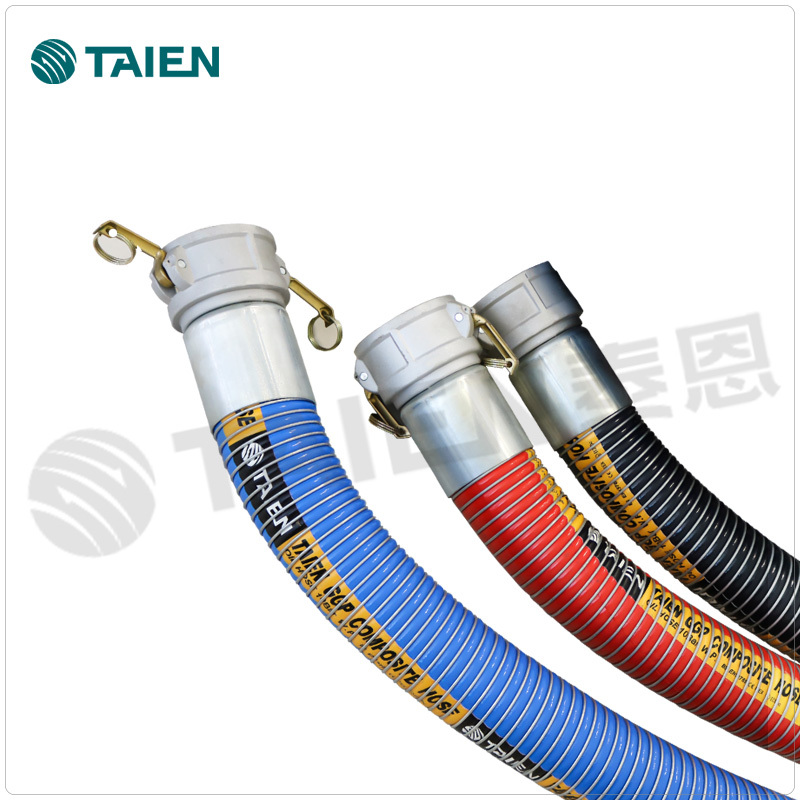Understanding Chemical Resistance Ratings for Hoses: A Comprehensive Guide
Release time:
2025-05-14
Author:
Source:
Abstract
Understanding Chemical Resistance Ratings for Hoses: A Comprehensive Guide
In the world of industrial applications, the choice of hose material can significantly impact safety, performance, and longevity. With various substances flowing through these hoses, knowing their **chemical resistance ratings** is crucial. This comprehensive guide will delve into what chemical resistance ratings are, how t
Understanding Chemical Resistance Ratings for Hoses: A Comprehensive Guide
In the world of industrial applications, the choice of hose material can significantly impact safety, performance, and longevity. With various substances flowing through these hoses, knowing their **chemical resistance ratings** is crucial. This comprehensive guide will delve into what chemical resistance ratings are, how they are determined, and their importance across different industries.
Table of Contents
- 1. What Are Chemical Resistance Ratings?
- 2. Why Are Chemical Resistance Ratings Important?
- 3. Factors Affecting Chemical Resistance Ratings
- 4. Types of Hoses and Their Chemical Resistance
- 5. Identifying Chemical Compatibility
- 6. How to Read Chemical Resistance Charts
- 7. Practical Applications of Chemical Resistance Ratings
- 8. Common Questions About Chemical Resistance Ratings
- Conclusion
1. What Are Chemical Resistance Ratings?
**Chemical resistance ratings** are standardized indicators that demonstrate how well hose materials can withstand exposure to specific chemicals. These ratings are crucial for determining the longevity and suitability of hoses in various environments. They guide users in selecting the right hoses for their applications, ensuring safety and efficiency.
2. Why Are Chemical Resistance Ratings Important?
The importance of chemical resistance ratings cannot be overstated. Here are several reasons why they matter:
2.1 Ensuring Safety
Using hoses that are incompatible with the chemicals they transport can lead to **leaks, ruptures, and hazardous situations**. Chemical resistance ratings help prevent accidents, protecting workers and the environment.
2.2 Enhancing Equipment Longevity
Selecting hoses with appropriate chemical resistance can significantly extend their lifespan. Incompatibility can cause materials to degrade, leading to costly replacements and downtime.
2.3 Compliance with Regulations
Various industries must adhere to safety regulations that dictate the use of appropriate materials. Understanding chemical resistance ratings helps ensure compliance and avoids legal issues.
3. Factors Affecting Chemical Resistance Ratings
Several factors influence a hose's chemical resistance ratings, including:
3.1 Temperature
The **temperature** of the chemicals being transported can affect the hose's integrity. Higher temperatures may accelerate degradation, while lower temperatures can harden some materials.
3.2 Concentration of Chemicals
The concentration of the chemical also plays a role. For instance, diluted acids may have a different effect than concentrated ones on the hose material.
3.3 Exposure Time
The length of time a hose is exposed to chemicals can impact its performance. Frequent, prolonged exposure can lead to premature failure.
4. Types of Hoses and Their Chemical Resistance
Different types of hoses are available for various applications, each with distinct chemical resistance profiles.
4.1 PVC Hoses
**PVC (Polyvinyl Chloride) hoses** are widely used due to their versatility and affordability. They offer good resistance to acids and bases but can be susceptible to certain organic solvents.
4.2 Rubber Hoses
**Rubber hoses** are flexible and durable. They are excellent for handling oils and fuels but may not perform well against strong acids or bases.
4.3 PTFE Hoses
**PTFE (Polytetrafluoroethylene) hoses** provide excellent chemical resistance across a wide temperature range. They are ideal for corrosive chemicals but are generally more expensive.
4.4 Silicone Hoses
**Silicone hoses** are known for their flexibility and high-temperature tolerance. However, they may not be suitable for all chemicals, particularly hydrocarbons.
5. Identifying Chemical Compatibility
Before selecting a hose, it’s essential to identify the compatibility of the materials with the chemicals involved. Follow these steps:
5.1 Consult Compatibility Charts
Many manufacturers provide compatibility charts that outline how different materials respond to various chemicals. This is a critical tool in making informed decisions.
5.2 Conduct Tests
If available data is insufficient, conducting compatibility tests under controlled conditions can provide insight into how the hose will perform.
6. How to Read Chemical Resistance Charts
Understanding how to interpret chemical resistance charts is vital for selecting the right hose. Here’s a breakdown:
6.1 Rating System
Most charts use a rating system (e.g., Excellent, Good, Fair, Poor) to indicate the level of compatibility. Familiarize yourself with these ratings to make informed choices.
6.2 Chemical Concentration
Pay attention to the specific concentrations listed in the charts, as resistance can vary significantly with changes in concentration.
7. Practical Applications of Chemical Resistance Ratings
Chemical resistance ratings find extensive applications across several industries:
7.1 Chemical Manufacturing
In chemical manufacturing, hoses transport various substances. Accurate chemical resistance ratings are critical for preventing leaks and ensuring safety.
7.2 Food and Beverage
In food processing, hoses must comply with safety standards. Chemical resistance ratings help ensure that hoses do not contaminate food products.
7.4 Pharmaceutical Industry
In pharmaceuticals, the integrity of chemical transport is paramount. Understanding chemical resistance ratings helps avoid contamination and ensures product quality.
8. Common Questions About Chemical Resistance Ratings
8.1 What is the best material for chemical resistance?
**PTFE** is often considered the best for its broad resistance to chemicals, but the best choice depends on specific applications.
8.2 How often should hoses be replaced?
Hoses should be inspected regularly, and replacement depends on wear and the chemical exposure level but typically ranges from 1-5 years.
8.3 Can chemical resistance ratings change over time?
Yes, factors like temperature, pressure, and exposure duration can affect the resistance of hoses over time.
8.4 Are all chemical resistance charts the same?
No, different manufacturers may use different testing methods; always refer to the specific manufacturer's chart for accurate information.
8.5 Can I use a hose rated for one chemical with another?
Using hoses for chemicals not listed in their ratings can be risky. Always consult compatibility charts before use.
Conclusion
Understanding chemical resistance ratings for hoses is essential for anyone involved in industries that utilize these vital components. By choosing the right hoses based on their resistance capabilities, you ensure safety, compliance, and efficiency in your operations. Knowing how to interpret chemical compatibility and resistance charts will empower you to make informed decisions that protect both your equipment and your workforce. As you navigate the world of hoses, let this guide serve as a comprehensive resource for maximizing safety and performance in your applications.
Recommended Reading







